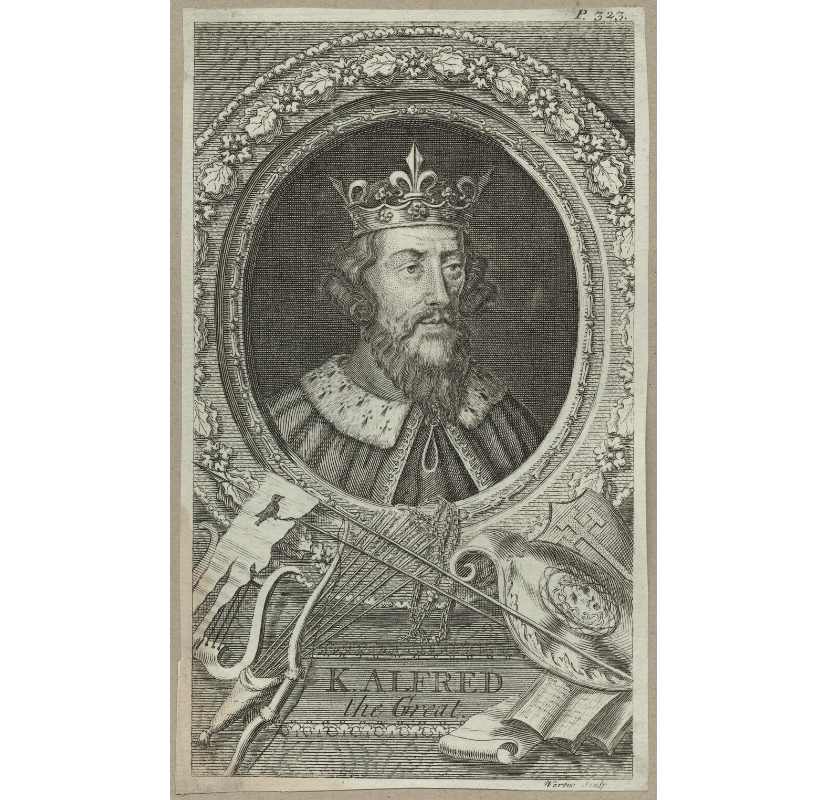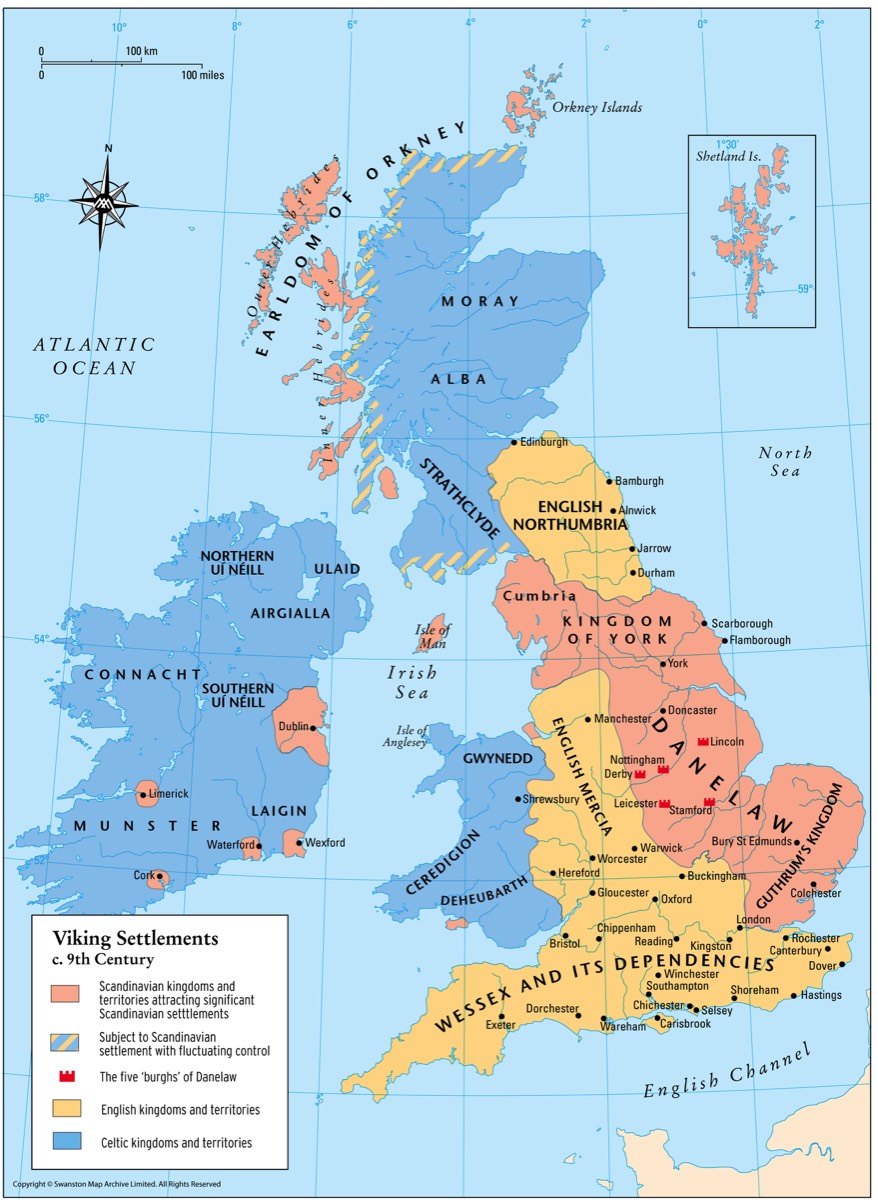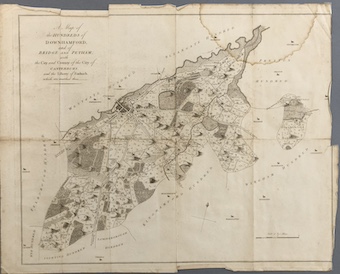Anglo Saxon Kings of England
Rise of the House of Wessex
In the 820s Egbert, the king of Wessex, broke Mercian control and declared himself the first king of the English.
After being crowned king in 871, King Alfred the Great spent several years fighting Viking invasions. He won a decisive victory in 878 and made an agreement with the Vikings, creating what was known as Danelaw in the north and east of England, whilst he became the dominant ruler in England. He oversaw the conversion of the Viking leader Guthrum to Christianity, becoming his Godfather.
Alfred had a reputation as a learned man who encouraged education. He also improved the legal system, creating the first English law code. The philosopher and historian David Hume (1711-1776) noted that Alfred's "body of laws served long as the basis of English jurisprudence, and was generally deemed the origin of what is denominated the Common Law."
Hume understood that trial by jury of twelve freeholders was very ancient in England and was fixed by the law of King Alfred.
In the 820s Egbert, the king of Wessex, broke Mercian control and declared himself the first king of the English.
After being crowned king in 871, King Alfred the Great spent several years fighting Viking invasions. He won a decisive victory in 878 and made an agreement with the Vikings, creating what was known as Danelaw in the north and east of England, whilst he became the dominant ruler in England. He oversaw the conversion of the Viking leader Guthrum to Christianity, becoming his Godfather.
Alfred had a reputation as a learned man who encouraged education. He also improved the legal system, creating the first English law code. The philosopher and historian David Hume (1711-1776) noted that Alfred's "body of laws served long as the basis of English jurisprudence, and was generally deemed the origin of what is denominated the Common Law."
Hume understood that trial by jury of twelve freeholders was very ancient in England and was fixed by the law of King Alfred.

King Alfred (‘The Great’) by George Vertue
© National Portrait Gallery, London

Anglo Saxon Administration
Alfred the Great also introduced administrative reforms such that the Kingdom of Wessex was probably the best governed in Europe at the time. Unlike their tribal predecessors the kings were responsible for the administration of justice. The wergild system was still in place but the king helped to run it and for the first time in Anglo-Saxon society it was possible to commit a crime against the king himself.
Shires or Counties The most important administrative unit was the shire or county. Originating in Wessex they were gradually extended to the rest of England. In Kent they were known as lathes. In the areas of Danish settlement [Danelaw] hundreds were called wapentakes and wards in the extreme northern counties of England.
Shires were under the control of officials called ealdorman. Ealdormen appointed shire reeves or Sheriffs to help manage the shire. They became the bedrock of English royal administration for many centuries.
Alfred the Great also introduced administrative reforms such that the Kingdom of Wessex was probably the best governed in Europe at the time. Unlike their tribal predecessors the kings were responsible for the administration of justice. The wergild system was still in place but the king helped to run it and for the first time in Anglo-Saxon society it was possible to commit a crime against the king himself.
Shires or Counties The most important administrative unit was the shire or county. Originating in Wessex they were gradually extended to the rest of England. In Kent they were known as lathes. In the areas of Danish settlement [Danelaw] hundreds were called wapentakes and wards in the extreme northern counties of England.
Shires were under the control of officials called ealdorman. Ealdormen appointed shire reeves or Sheriffs to help manage the shire. They became the bedrock of English royal administration for many centuries.
Hundreds
Shires were divided into smaller administrative units called hundreds. The hundred was usually made up of around a 100 hides of land and was run by hundredmen, usually local landowners.
A hide was the amount of land required to support one family. The area varied depending on the quality of the land. It was used to assess tax, tribute and military service until at least the 12th century.
The term hundred first appeared in the laws of Edmund I (939–946) although there is evidence that the hundred was already a long-established institution.
The hundred survived as a local administrative unit into the 19th century.
Tithing From around the 10th century each hundred was further divided into tithings which comprised the households living on ten hides of land. The tithing was led by a tithingman (borsholder or headbourg) who was senior to and responsible for the other nine households.
Shires were divided into smaller administrative units called hundreds. The hundred was usually made up of around a 100 hides of land and was run by hundredmen, usually local landowners.
A hide was the amount of land required to support one family. The area varied depending on the quality of the land. It was used to assess tax, tribute and military service until at least the 12th century.
The term hundred first appeared in the laws of Edmund I (939–946) although there is evidence that the hundred was already a long-established institution.
The hundred survived as a local administrative unit into the 19th century.
Tithing From around the 10th century each hundred was further divided into tithings which comprised the households living on ten hides of land. The tithing was led by a tithingman (borsholder or headbourg) who was senior to and responsible for the other nine households.
Anglo Saxon Courts
Although the King had his Court of wise men, the Witenagamot, Anglo-Saxon law was decentralised and each county would rule according to their own local customary law.
Although the King had his Court of wise men, the Witenagamot, Anglo-Saxon law was decentralised and each county would rule according to their own local customary law.
Hundred Courts
Every hundred appointed a hundredman who, together with the ten tithingmen and a clerk, would meet to deal with local administrative issues. They tried legal cases, both criminal and civil, kept the peace, levied taxes and raised troops.
These meetings were called courts and the hundred court met every four weeks, in the open if possible and usually at a prominent local landmark that gave its name to the hundred.
Originally, all dwellers within the hundred were expected to attend, but gradually attendance became restricted to the tenants of specific land. The attendees normally acted as the judges, but the sheriff was judge on the two annual visits he made to each hundred court, known as his tourn.
Whilst it remained the responsibility of a victim of crime, or their family, to bring an offender to justice, the hundredmen and tithingmen dealt with crimes that broke the king's peace, i.e. crimes that were considered to be against the king himself.
When a hundred court was unable to reach a judgement, or where disputes crossed the boundary between two hundreds, these matters were dealt with by the shire court.
Every hundred appointed a hundredman who, together with the ten tithingmen and a clerk, would meet to deal with local administrative issues. They tried legal cases, both criminal and civil, kept the peace, levied taxes and raised troops.
These meetings were called courts and the hundred court met every four weeks, in the open if possible and usually at a prominent local landmark that gave its name to the hundred.
Originally, all dwellers within the hundred were expected to attend, but gradually attendance became restricted to the tenants of specific land. The attendees normally acted as the judges, but the sheriff was judge on the two annual visits he made to each hundred court, known as his tourn.
Whilst it remained the responsibility of a victim of crime, or their family, to bring an offender to justice, the hundredmen and tithingmen dealt with crimes that broke the king's peace, i.e. crimes that were considered to be against the king himself.
When a hundred court was unable to reach a judgement, or where disputes crossed the boundary between two hundreds, these matters were dealt with by the shire court.
Shire Courts
The shire court was above the hundred court and met twice a year, usually around Easter and Michaelmas. It was presided over by the alderman, the bishop and the king's senior reeve in the area, with all the major landowners in the shire, or their reeves, present. This court dealt with law suits and all business essential to the smooth running of the shire.

1798 Map of the Hundreds of Downhamford, and of Bridge and Petham with the City and County of the City of Canterbury and the Liberty of Fordwich